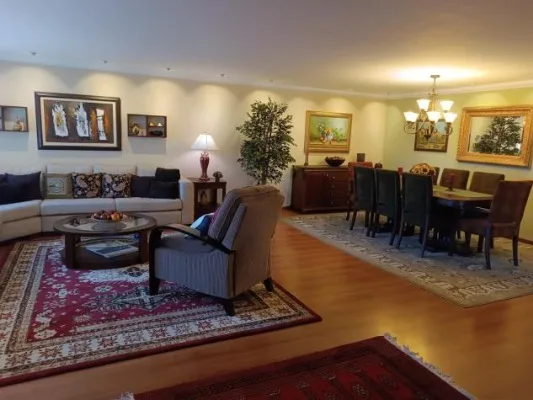From Montecristi and Jipijapa to Cuenca, Ecuador’s Panama hat trade has a long, colorful history
By Deke Castleman
Quick: Who’s buried in Grant’s Tomb? How long was the Hundred Years War? The Canary Islands are named after what animal? And what country do Panama hats come from?
If you answered General Ulysses S. and his wife Julia, 116 years, the dog, and Ecuador, you’re smarter than you look!

Panama hats at the Ortega factory in Cuenca.
It’s one of the world’s classic riddles and abiding ironies that Panama hats are, and have always been, made in Ecuador. Of course, many people know that, starting as far back as the 1830s, Ecuador’s sombreros de paja toquilla, or “hats of toquilla straw,” were originally marketed in Panama, the main route for travelers between the coasts of North America.
When gold was discovered in California, these strong, lightweight, straw hats exploded in popularity, as 49ers appreciated their ability to deflect the sun, allow sweat to pass through, fold small for storage, and accessorize summer-weight linen and silk suits.
Panama hats gained further acclaim in the early 1900s when the Panama Canal was under construction. Canal workers often wore the hats, and a widely published photograph of U.S. President Teddy Roosevelt in his Panama hat as he operated a 95-ton steam shovel is generally credited with the origin of the name.
The hats also known, although much less commonly, as Jipijapa and Montecristi hats, after two towns on the Ecuadorian coast that were the original centers of the toquilla-straw-hat trade. When the conquistadores arrived in the 16th century, they saw natives wearing woven head coverings that they likened to “vampire wings.” In the early 17th century, with prompting from the Spanish, these were transformed into brimless hats, known as toquillas. In 1796, when King Charles V of Spain promoted the creation of craft guilds, among them was one for the straw hat.
In the 1830s, with the export market for the hats growing, businessmen in Cuenca saw an opportunity to boost the local economy by opening a straw-hat factory, training weavers, establishing supply lines for the paja toquilla from the coast, automating the process with hydraulic presses and hat forms, hiring master weavers, and declaring hat-making apprenticeships mandatory throughout Azuay Province. Cuenca remains been the center for manufacturing and exporting Panama hats.
At the beginning of the 20th century, national hero Eloy Alfaro funded his liberal revolution of Ecuador through the export of Panamas. Napolean III, Edward VIII, and numerous artists, writers, and movie stars have worn them over the years. There is, fact, a real Alfaro – Panama connection, as he established an export business in Panama City; a street in that city bears his name.
And if you’re of an age to remember the 1959 moldy-oldie by Dodie Stevens, it’s possible you’re already singing the chorus to “Pink Shoelaces”: “He wears tan shoes with pink shoelaces/And a big Panama with a purple hat band.”
The largest and best-known straw-hat company in Cuenca is Homero Ortega, located on Avenida Gil Ramirez Dávalos, behind the Terminal Terrestre.
Aurelio Ortega García, like many Cuencanos, made his living on straw hats in the early 20th century. His son, company founder Homero Ortega, grew up in the business, trekking with his father through the Andes, crossing the Continental Divide, and arriving at the port in Guayaquil where they boarded trading ships and sold their hats to merchants heading for Panama. Over the ensuing decades, Homero built the company into one of the largest Panama hat exporters in the world, selling hats to 32 countries on five continents. Five generations of the Ortega family have been dedicated to hat-making.
In 2008, Homero Ortega opened its La Magia del Sombrero (Magic of the Hat) museum. The attractive three-room museum has bilingual exhibits on the history of the Panama hat, the hat-making process, and the history of Homero Ortega itself. From there, guides take visitors throughout the plant, explaining the manufacturing process.
A paja toquilla forest takes three years to mature. The plant is cut and the fibers are stripped thin, boiled, and hung up to dry for around a week. Next, the straw is woven into the rough hat. The hats are bleached and dried; the brim is ironed and trimmed of excess straw. Then the crown is shaped, using special presses and different-sized forms that combine the optimal heat, humidity, and pressure to impart the desired shape and feel. The brim is finished by cutting it to the desired width and reinforcing it, then a band is stitched inside the hat and another is placed around the hat on the outside.
The quality is in the tightness of the weave and the skill of the weaver. A hundred weaves per square inch are considered minimal; the highest quality and most expensive hats have as many as 2,000 weaves per square inch. The superfino Panamas are so expertly woven that, reportedly, they can hold water; also, they can be rolled up so small for storage or traveling that they can pass through a wedding ring. Superfinos can sell for thousands of dollars, though you can also buy pedestrian, looser-weave Panama around town for as low as $20.
Of course, you can purchase any of the numerous weaves, sizes, colors, and styles of Panamas in Homero Ortega’s showroom, where your guide delivers you at the end of the tour, from the 300-400 hats finished daily at the plant. The two most popular styles of mens’ hats, appropriately enough, are the “Montecristi” and the “Cuenca.”
The adjacent gift shop sells jewelry, carvings, shawls, painted plates, wall hangings, boxes, dishes, and other Ecuadorian products, including Pacari chocolate, the first single-origin organic chocolate made entirely in Ecuador, which uses the Arriba Nacional cacao bean.
The museum, showroom, and gift shop are open Mon.-Fri. 8-12:30 and 2:30-6, Sat. and Sun. 8-12:30.
___________________


















